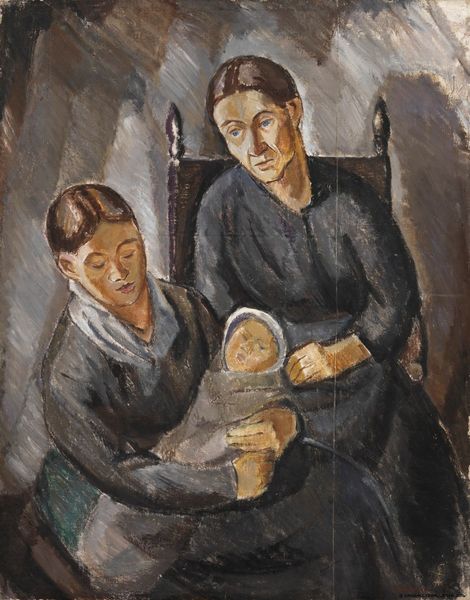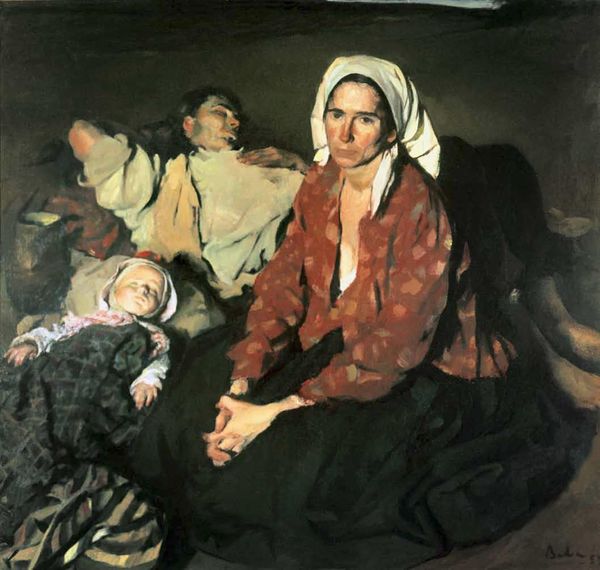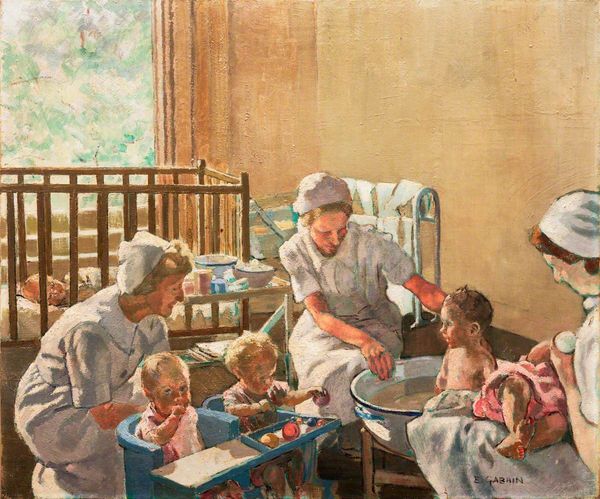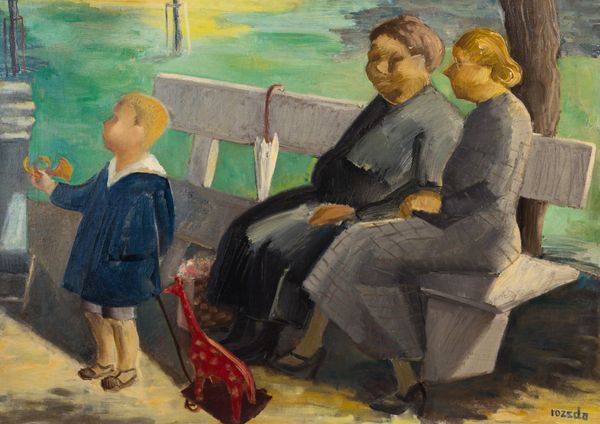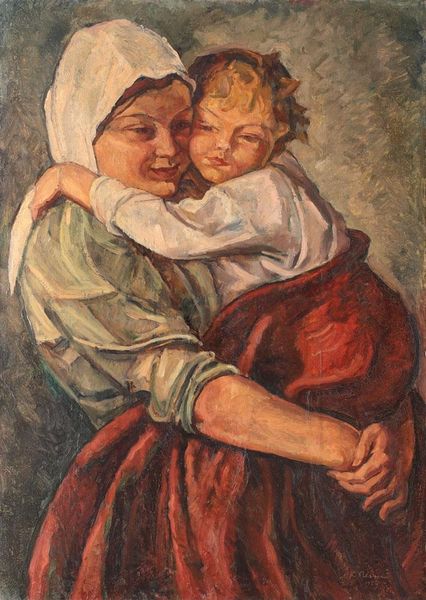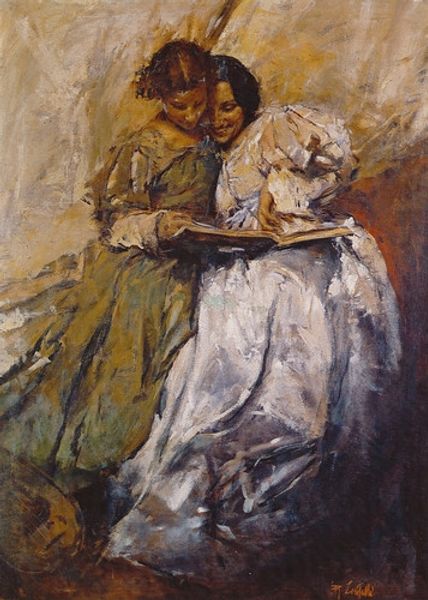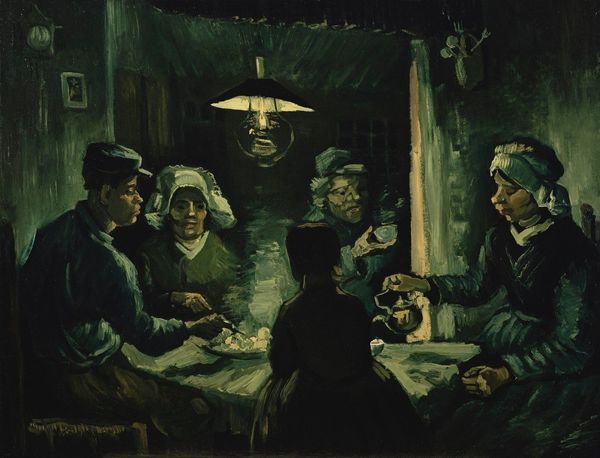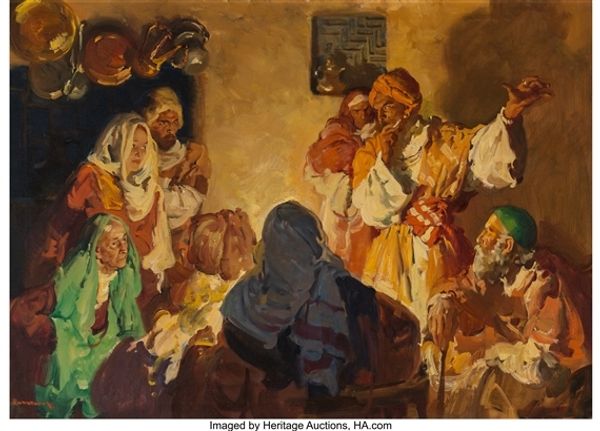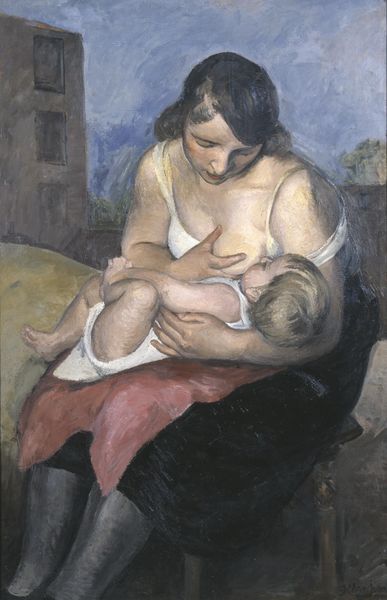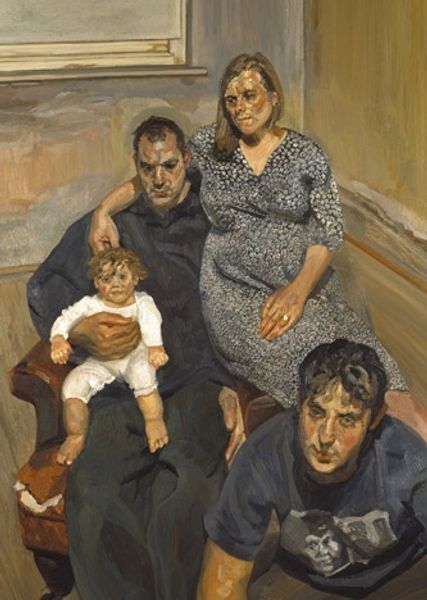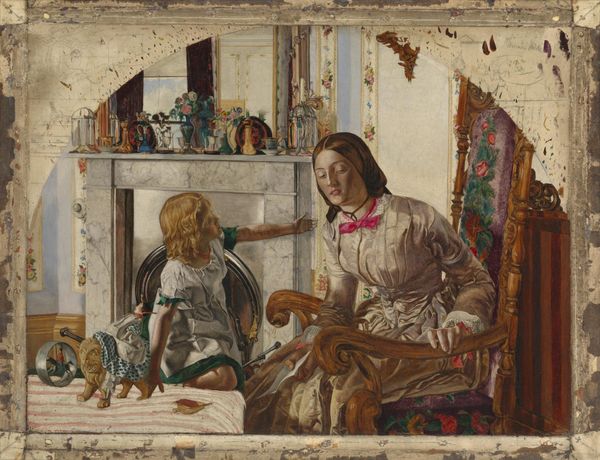
painting, oil-paint
#
portrait
#
painting
#
oil-paint
#
oil painting
#
group-portraits
#
expressionism
#
portrait art
#
modernism
Copyright: Public domain US
Curator: Looking at Tyko Sallinen's "Kauppiaan Tyttäret," or "Merchant's Daughters" from 1917, the initial impression is almost melancholic. The heavy, earthy palette and somber expressions…it’s quite powerful. Editor: I agree. The application of the oil paint is thick, gestural. You can really see the process of its creation. The materiality contributes a certain raw honesty, doesn't it? Look at the textures - are they indicative of broader changes to available painting technology at the time, the mechanisation of canvas creation or paint mixing maybe? Curator: It does, although I'm immediately drawn to what the work represents in the context of its time. Sallinen was working during a period of intense social and political upheaval in Finland. The depiction of these young women, potentially from a rising merchant class, speaks to a shift in societal power. How are they complicit or resistant to that structure, and what can the work reveal of gender at the time? Editor: Yes, the subjects themselves and their social positioning are key here. But, for me, it's more compelling to understand how Sallinen achieves this effect. Note the strong outlines around the figures, creating a solidity but also flatness—what choices in medium or facture underpin the message. Perhaps the industrialisation of materials creates access, yet the painter can not achieve dimension like they might in earlier eras with higher grade ingredients? Curator: Interesting. I'm more taken by the figures' gaze; they all look down, inward, perhaps contemplative, or perhaps resigned. This invites speculation on the inner lives of women during a transformative era. It can be read against the backdrop of early feminist movements. How were Finnish women's roles being redefined at this time? It surely tells us something about the artist's intentions, and broader social discourse around womanhood at the time. Editor: While historical and social context provides meaning, how that information interacts with its method of making matters too! Note, in particular, how he manages a flattening effect with the application of colours like muted blues and whites, further grounding our observation in the very real stuff from which its built! It is what provides insight to labour at the time, perhaps access to materials for all, or a desire to highlight everyday Finnish life. Curator: That is fair; there is always more than one lens through which we may explore art. And focusing our awareness onto labour itself brings insight into Finland's history that we can see in few other places than its artworks. Editor: Agreed. This is where we see the intersection of ideas around making practices of material production and how social history creates different interpretations and meanings in our modern gaze.
Comments
No comments
Be the first to comment and join the conversation on the ultimate creative platform.
